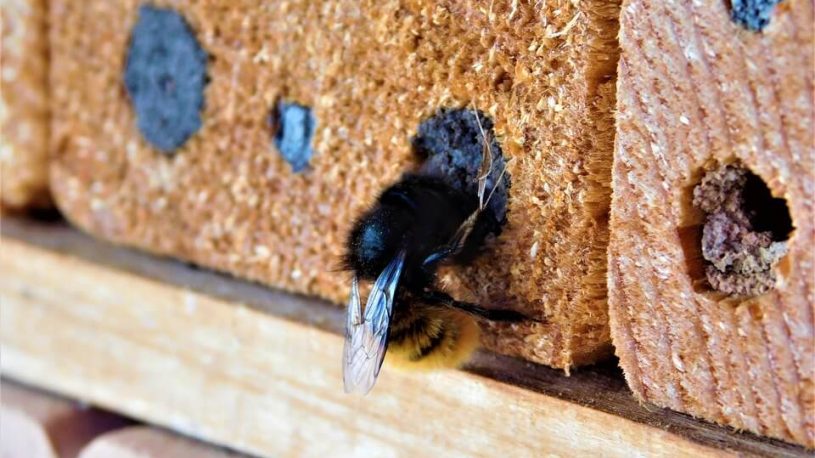How to Get Rid of Carpenter Bees: A Comprehensive Guide
Carpenter bees are a common pest that can cause significant damage to wooden structures, including homes, decks, and fences. Understanding how to identify, prevent, and eliminate carpenter bees is essential for homeowners looking to protect their property. This article will provide a detailed overview of carpenter bees, their behavior, effective control methods, and preventive measures to keep them at bay.
Understanding Carpenter Bees
Identification
Carpenter bees are large, solitary bees that resemble bumblebees but have a distinct appearance. Here are some key characteristics:
- Size: Carpenter bees are typically about 1 inch long.
- Color: They have a shiny black abdomen, which is hairless, in contrast to the fuzzy bodies of bumblebees.
- Behavior: Unlike honeybees, carpenter bees do not live in colonies. They are solitary and often bore into wood to create nests.
Life Cycle
Carpenter bees have a life cycle that includes four stages: egg, larva, pupa, and adult. Here’s a brief overview:
- Egg: Female carpenter bees lay eggs in the tunnels they create in wood.
- Larva: The eggs hatch into larvae that feed on pollen and nectar stored in the tunnel.
- Pupa: After feeding, the larvae pupate inside the tunnel.
- Adult: Adult bees emerge in the spring, ready to mate and start the cycle again.
Habitat and Behavior
Carpenter bees are attracted to untreated or weathered wood, where they create nests by boring holes. They prefer softwoods like cedar, pine, and redwood. These bees are often found in:
- Wooden decks and fences
- Eaves and overhangs
- Sheds and wooden furniture
Signs of Infestation
Identifying a carpenter bee infestation early can help mitigate damage. Look for the following signs:
- Holes in Wood: Small, perfectly round holes (about 1/2 inch in diameter) in wooden surfaces.
- Wood Shavings: Piles of sawdust or wood shavings beneath the holes, indicating nesting activity.
- Bee Activity: Observing carpenter bees hovering around wooden structures, especially in the spring and summer.
How to Get Rid of Carpenter Bees
1. Prevention
Preventing carpenter bees from nesting in your property is the first line of defense. Here are some effective prevention strategies:
- Paint or Stain Wood: Applying paint or stain to wooden surfaces can deter carpenter bees, as they prefer untreated wood.
- Use Hardwood: When building or repairing structures, opt for hardwoods, which are less attractive to carpenter bees.
- Seal Holes: Inspect your property for existing holes and seal them with caulk or wood filler to prevent nesting.
2. Trapping
Using traps can help capture and reduce the carpenter bee population. Here’s how to make a simple carpenter bee trap:
Materials Needed:
- A wooden box or container
- A funnel
- A jar or bottle to collect bees
- Wood screws
Steps:
- Create the Trap: Drill a hole in the wooden box to fit the funnel snugly. The funnel should lead to the jar or bottle.
- Position the Trap: Place the trap near areas where you’ve noticed carpenter bee activity.
- Monitor and Empty: Check the trap regularly and empty it as needed.
3. Chemical Control
If the infestation is severe, chemical control methods may be necessary. Here are some options:
- Insecticidal Sprays: Use a residual insecticide specifically labeled for carpenter bees. Apply it directly into the holes where bees are nesting.
- Dust Insecticides: Dust formulations can be applied to the entrance holes, providing a longer-lasting solution.
Safety Precautions:
- Always follow the manufacturer’s instructions when using chemical treatments.
- Wear protective clothing, including gloves and a mask, during application.
4. Natural Remedies
For those who prefer organic solutions, several natural remedies can deter carpenter bees:
- Essential Oils: Certain essential oils, such as peppermint or citrus oil, can repel carpenter bees. Mix with water and spray around infested areas.
- Vinegar Solution: A mixture of vinegar and water can be sprayed on wooden surfaces to deter bees.
5. Professional Pest Control
If DIY methods are unsuccessful, hiring a professional pest control service may be necessary. Professionals can assess the extent of the infestation and apply targeted treatments effectively.
FAQ Section
Q: Are carpenter bees harmful to humans?
A: Carpenter bees are not aggressive and typically do not sting unless provoked. However, they can cause significant damage to wooden structures.
Q: How can I tell if I have a carpenter bee infestation?
A: Look for small, round holes in wood, sawdust piles beneath the holes, and observe bee activity around your property.
Q: Can carpenter bees damage my home?
A: Yes, carpenter bees can cause structural damage by boring holes into wood, especially if left untreated.
Q: How do I prevent carpenter bees from nesting?
A: Paint or stain wooden surfaces, use hardwoods, and seal existing holes to deter nesting.
Q: What should I do if I find a carpenter bee nest?
A: If you find a nest, consider trapping or using insecticides. If the infestation is severe, consult a professional pest control service.
Summary Table
| Method | Description |
|---|---|
| Prevention | Paint or stain wood, use hardwoods, seal holes. |
| Trapping | Create a simple trap using a funnel and jar. |
| Chemical Control | Use insecticidal sprays or dust formulations. |
| Natural Remedies | Use essential oils or vinegar solutions. |
| Professional Help | Consult pest control services for severe infestations. |
For more information on carpenter bees and pest control, you can refer to the U.S. Department of Agriculture (USDA) website.
Conclusion
Getting rid of carpenter bees requires a combination of prevention, trapping, and, if necessary, chemical control. Understanding their behavior and habitat can help you effectively manage and eliminate these pests. By taking proactive measures, you can protect your wooden structures and ensure a carpenter bee-free environment. Whether you choose DIY methods or professional assistance, addressing the issue promptly is key to preventing further damage.



